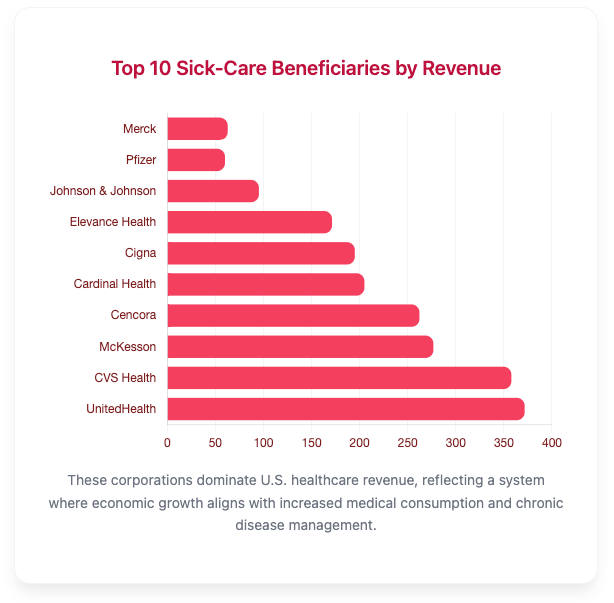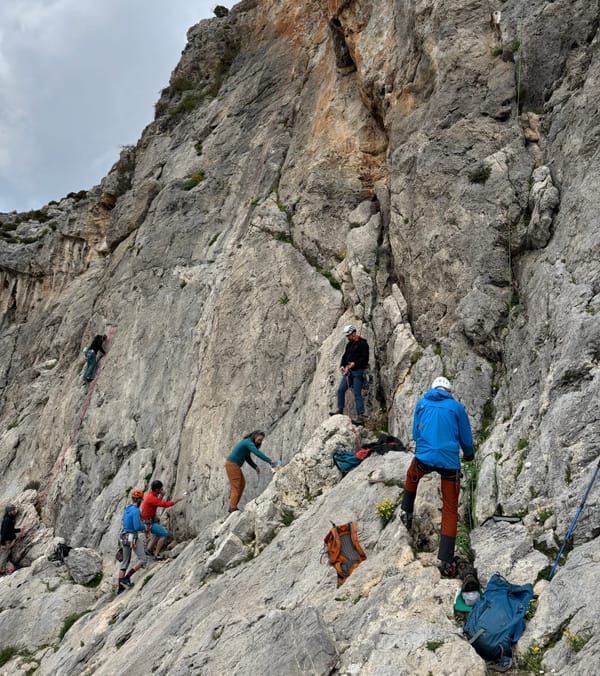Thoughts From The Crag: Health & Wellness Seems To Have Little Value!
Someone said something very interesting that made me stop and really think. They said "It's a shame that our biggest companies profit off of pain and suffering instead of actual health and wellness!".

One of the things I love most about rock climbing is that it solves one of my biggest problems: I hate working out. I have plenty of access to weights and machines and I know that lifting helps maintain muscle mass, which is important, but I just can't stand doing it. Rock climbing allows me to build muscle and core functions, but in a fun and gamified way that keeps me engaged.
If you start climbing in the gym, it's only a matter of time before you'll find yourself at the base of a real life Crag. For the uninitiated, a Crag is where you go to climb and it's where you'll end up spending days socializing with other climbers as you belay others and patiently wait your turn.

Recently on a climbing day with a number of friends, the topic of health and wellness came up, as it's prone to do with this crowd. Someone said something very interesting that made me stop and really think. They said "It's a shame that our biggest companies profit off of pain and suffering instead of actual health and wellness!".
The point they were making was that our biggest healthcare companies make bigger profits when more people get sick, when they deny more benefits than they approve and when they can prescribe a recurring medication that treats rather than cures a condition. I thought this was pretty profound and I came back from the trip to do a little research to see if I could poke holes in this logic at all.
The following is a little bit of the rabbit hole I've gone down on the topic and only looks at one aspect of this statement. I wanted to follow the money and see which was more profitable? Treating or Preventing? With that in mind, I leaned into my friend ChatGPT and started looking at the biggest "healthcare" companies, which I'm going to call "Sick-Care" and the biggest "Health and Wellness Prevention" companies, which I'm going to call "Health Independence".
For the record, I don't really consider this a true scientific exploration in anyway. I'm sure there are flaws in some logic, but it's only meant to demonstrate where money is flowing as it relates to health outcomes.
Revenue Contrast: Sick-Care vs. Health-Independence Companies
Why is more value placed on treating than preventing?
This data presents a comparative analysis of two major sectors in the U.S. economy: traditional "sick-care" industries, which derive revenue primarily from ongoing medical treatment, pharmaceuticals, and insurance, versus emerging "health-independence" companies that profit as people achieve and maintain better physical, mental, and emotional well-being.
The data originates from 2023–2024 public filings, annual reports, and financial disclosures from sources such as Fortune 500 listings and investor relations sites. For private firms, such as WHOOP or Calm, estimated figures from industry analyses were used. Revenue values are in U.S. billions and rounded for clarity.
The selection criteria emphasized business models: companies in the sick-care group were chosen because their profitability increases with higher rates of illness or ongoing treatment. Conversely, health-independence companies were selected for business models that thrive when individuals become healthier, fitter, and less dependent on medical interventions.

Not surprising, the top 10 Sick-Care companies have annual revenues that are in the Trillions while the top 10 Health Independence companies barely add up to 2% of that number.


An argument can surely be made that some of these Health-Independence companies are not really health and wellness focused. I've seen a few Yeti coolers full of beer and more than a few folks walking around in Lululemon, not doing yoga. However, no other companies that fit the criteria emerged in the findings, which means they are all smaller than the ones shown here, further accentuating the point.
While the sick-care industry commands trillions in revenue, it primarily monetizes treatment rather than prevention. In contrast, the wellness and health-independence sectors remain relatively small but reflect a growing shift toward self-agency and proactive well-being.
This comparison underscores a critical opportunity for investors, policymakers, and entrepreneurs: to reimagine profit models that scale through better human outcomes, where financial success grows in step with community health, longevity, and vitality.

Key Takeaways
- Economic imbalance: The U.S. economy directs trillions toward industries that benefit from treating disease, while preventive and wellness-focused companies represent less than 2% of that scale.
- Growth potential: The health-independence sector shows room for rapid expansion as consumers prioritize fitness, nutrition, and mental wellness as essential investments.
- Investor insight: There is an emerging opportunity for capital allocation toward models that reward prevention, wellness, and sustainability instead of illness management.
- Systemic challenge: Current healthcare incentives reinforce treatment volume over health outcomes—transformative innovation will require re-aligning profit motives with human flourishing.
- Societal opportunity: The next generation of wellness companies can redefine GDP impact by tying national prosperity to population health and happiness.





